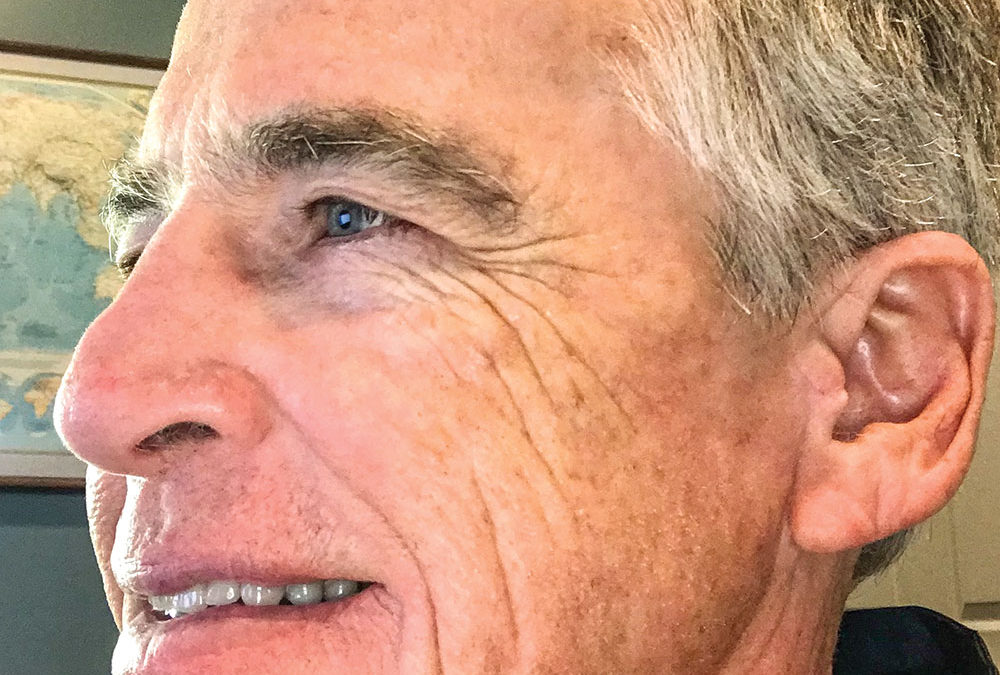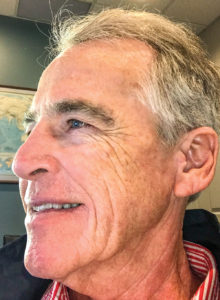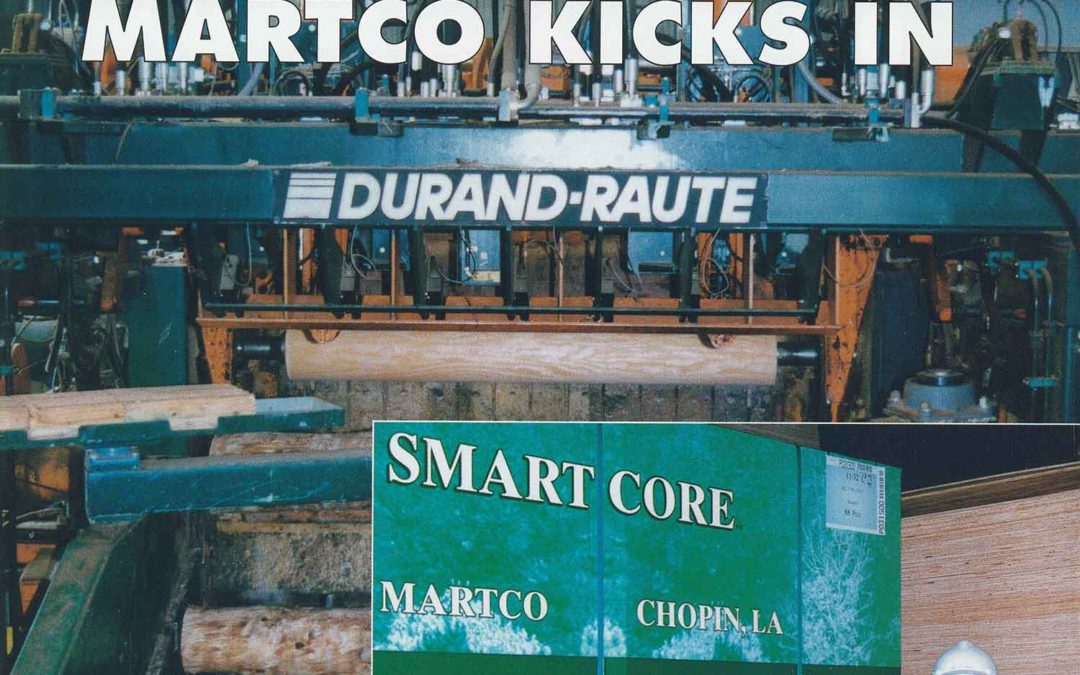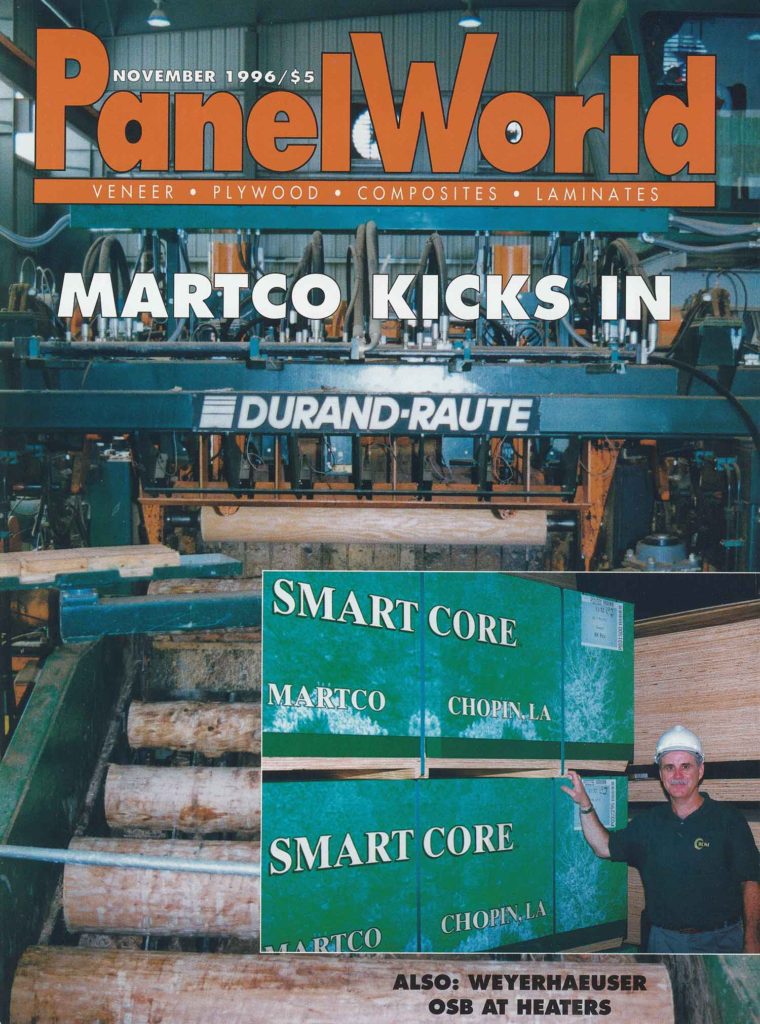Kadant Carmanah, Hexion Announce Collaborative PartnershipAs a manufacturer of stranding equipment used in the production of oriented strandboard...

There’s No Time Like The Future
THERE’S NO TIME LIKE THE FUTURE
 Article by Rich Donnell, Editor-in-Chief, Panel World September 2021
As I write this, several of us on the editorial staff are about to head to Atlanta, Georgia where we will be exhibiting our sawmill magazine, Timber Processing, at the Southern Forest Products Assn. lumber machinery exposition in the Georgia World Congress Center. In fact we’re also putting on a one-day sawmill Productivity & Efficiency conference in collaboration with SFPA.
We’ll be staying at the Omni Hotel at CNN Center, and I’m sure we’ll be a little nervous about it. One reason is because this is where we stayed and where our Panel World magazine hosted PELICE back in March 2020, when all heck broke loose because of the pandemic. When that conference started, some infections had surfaced in the state of Washington. Only one had been reported in metro Atlanta, and that was somebody who had recently returned from a trip to Italy, where the virus was already in full motion. By the time the two-day PELICE ended, the world had turned totally upside down. By the time I checked out of the Omni Hotel, it was a ghost town.
Now here we are 17 months later. A good many of us are vaccinated. Some of us aren’t. The virus infections decreased dramatically upon the release of the various vaccinations and everybody was starting to feel pretty good as things were getting somewhat back to normal. Now we hear about a new virus variant that seems to be taking its toll on the unvaccinated, younger adults included, which is also causing a little bit of havoc on even the vaccinated, though those latter reports seem to be rather vague.
But Atlanta here we come, and where we intend to be again come next March 31-April 1 for the eighth Panel & Engineered Lumber International Conference & Expo, which immediately follows the Wood Bioenergy Conference & Expo held March 29-30 and hosted by yet another of our magazines, Wood Bioenergy.
Who knows how the world will be rolling by then, but we can’t afford to sit back and expect the worst. On the contrary, we’re planning full speed ahead and I’m pleased to report that by the accelerated pace of exhibitors signing up for the next PELICE that others are thinking along those same lines.
As many of you know, every exhibitor at PELICE is either a Gold, Silver or Bronze sponsor. Already the likes of Dürr, IPCO, Meinan, Cogent Industrial, Georgia-Pacific Chemicals, TSI-Sigma Thermal, Dieffenbacher, Raute, Siempelkamp, Hexion and Veneer Services have signed on as Gold sponsors, and an equal number have come in as Silver and Bronze sponsors. Numerous companies are exhibiting in both the PELICE and Wood Bio events.
While PELICE 2020 was probably the last conference to be held as the pandemic struck, perhaps PELICE 2022 will be the first one truly out of the gate that’s uninhibited by virus constraints.
Article by Rich Donnell, Editor-in-Chief, Panel World September 2021
As I write this, several of us on the editorial staff are about to head to Atlanta, Georgia where we will be exhibiting our sawmill magazine, Timber Processing, at the Southern Forest Products Assn. lumber machinery exposition in the Georgia World Congress Center. In fact we’re also putting on a one-day sawmill Productivity & Efficiency conference in collaboration with SFPA.
We’ll be staying at the Omni Hotel at CNN Center, and I’m sure we’ll be a little nervous about it. One reason is because this is where we stayed and where our Panel World magazine hosted PELICE back in March 2020, when all heck broke loose because of the pandemic. When that conference started, some infections had surfaced in the state of Washington. Only one had been reported in metro Atlanta, and that was somebody who had recently returned from a trip to Italy, where the virus was already in full motion. By the time the two-day PELICE ended, the world had turned totally upside down. By the time I checked out of the Omni Hotel, it was a ghost town.
Now here we are 17 months later. A good many of us are vaccinated. Some of us aren’t. The virus infections decreased dramatically upon the release of the various vaccinations and everybody was starting to feel pretty good as things were getting somewhat back to normal. Now we hear about a new virus variant that seems to be taking its toll on the unvaccinated, younger adults included, which is also causing a little bit of havoc on even the vaccinated, though those latter reports seem to be rather vague.
But Atlanta here we come, and where we intend to be again come next March 31-April 1 for the eighth Panel & Engineered Lumber International Conference & Expo, which immediately follows the Wood Bioenergy Conference & Expo held March 29-30 and hosted by yet another of our magazines, Wood Bioenergy.
Who knows how the world will be rolling by then, but we can’t afford to sit back and expect the worst. On the contrary, we’re planning full speed ahead and I’m pleased to report that by the accelerated pace of exhibitors signing up for the next PELICE that others are thinking along those same lines.
As many of you know, every exhibitor at PELICE is either a Gold, Silver or Bronze sponsor. Already the likes of Dürr, IPCO, Meinan, Cogent Industrial, Georgia-Pacific Chemicals, TSI-Sigma Thermal, Dieffenbacher, Raute, Siempelkamp, Hexion and Veneer Services have signed on as Gold sponsors, and an equal number have come in as Silver and Bronze sponsors. Numerous companies are exhibiting in both the PELICE and Wood Bio events.
While PELICE 2020 was probably the last conference to be held as the pandemic struck, perhaps PELICE 2022 will be the first one truly out of the gate that’s uninhibited by virus constraints.
Latest News
Kadant Carmanah, Hexion Announce Collaborative Partnership
LP Building Solutions Names Tony Hamill COO
LP Building Solutions Names Tony Hamill COOLP Building Solutions (LP) has announced the appointment of Tony Hamill as Senior Vice President, Chief...
Jeremy Goebel Named Con-Vey President
Jeremy Goebel Named Con-Vey PresidentCon-Vey in Roseburg, Ore. appointed Jeremy Goebel as its new President, effective as of June 1. The Board of...
Huber’s Terry Liles Wins FPS Distinguished Service Award
Huber’s Terry Liles Wins FPS Distinguished Service Award Each year, the Forest Products Society (FPS) honors individuals who have made exceptional...
Find Us On Social
Newsletter
The monthly Panel World Industry Newsletter reaches over 3,000 who represent primary panel production operations.
Subscribe/Renew
Panel World is delivered six times per year to North American and international professionals, who represent primary panel production operations. Subscriptions are FREE to qualified individuals.
Advertise
Complete the online form so we can direct you to the appropriate Sales Representative. Contact us today!


